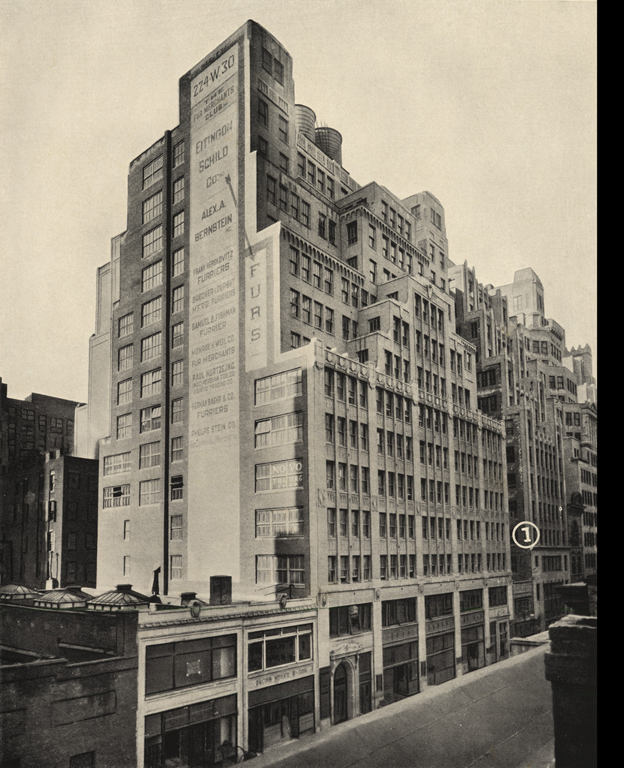The Skyscraper Museum is devoted to the study of high-rise building, past, present, and future. The Museum explores tall buildings as objects of design, products of technology, sites of construction, investments in real estate, and places of work and residence. This site will look better in a browser that supports web standards, but it is accessible to any browser or Internet device.
AN EXTENDED INDUSTRY: THE SUBURBS OF THE GARMENT DISTRICT

224-32 West 30th Street, Big Buildings Using the Service of the New York Edison Company, 1926. Collection of Andrew S. Dolkart.
The women's garment industry was the nexus for related industries, located on nearby streets known as the "suburbs" of the Garment District. The most prominent of these satellite areas was the Fur District, West 25th to 30th Streets between Sixth and Eighth Avenues. The furriers who manufactured coats also made cuffs and collars that were delivered to the coat factories farther north. Shaped by the same zoning law, these lofts are indistinguishable from those in the Seventh Avenue district and were designed by the same group of architects.
New York was also the millinery capital of America, designing and producing most of the hats worn by American women. In the 1920s, the millinery industry located to the east of the Garment District in lofts between Fifth and Sixth Avenues, including many in the restricted zone the Save New York Committee had forced the garment firms to vacate. Millinery was far less objectionable to the department store owners and their supporters, because it was largely a handwork trade that primarily employed women who did not congregate in the streets at noontime.
Fabric dealers had their own clusters of buildings-silk, for example, centered on Madison and Park Avenues in the 30s. Menswear remained largely in the old factories in the Washington Square area. Many other businesses contributed to New York's success as a clothing center, with wholesalers and manufacturers specializing in belts, bindings, braids, buttons, caps, collars and cuffs, corsets, gloves, hosiery, knitwear, labels, linings, neckwear, negligees, pajamas, petticoats, spangles, thread, underwear, and many other goods. Firms that sold and repaired the machinery also rented space in lofts on streets convenient to the garment factories. Together, these garment-related industries were the backbone of the city's manufacturing economy.
